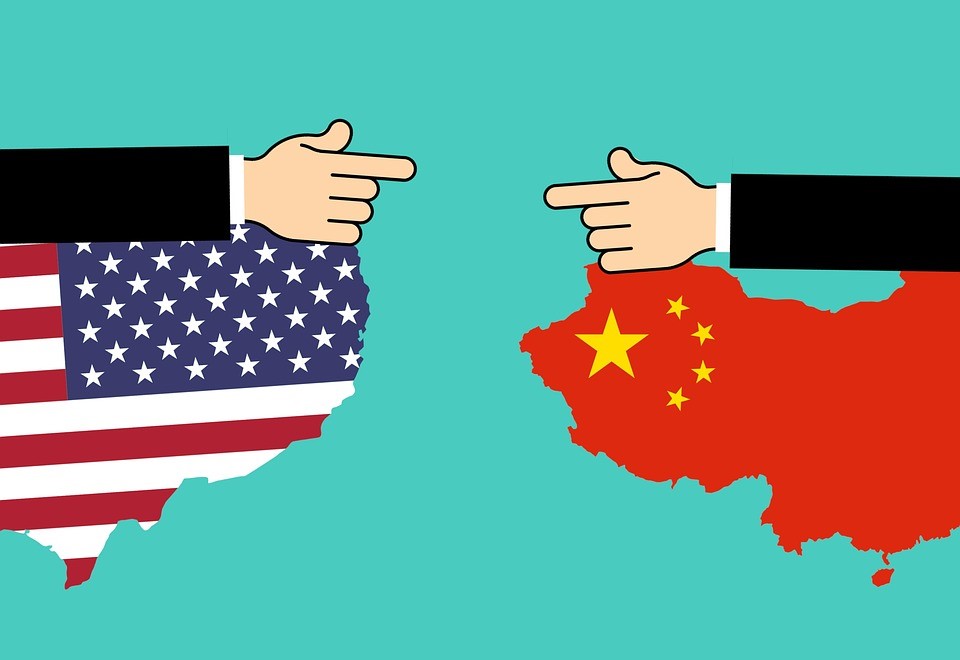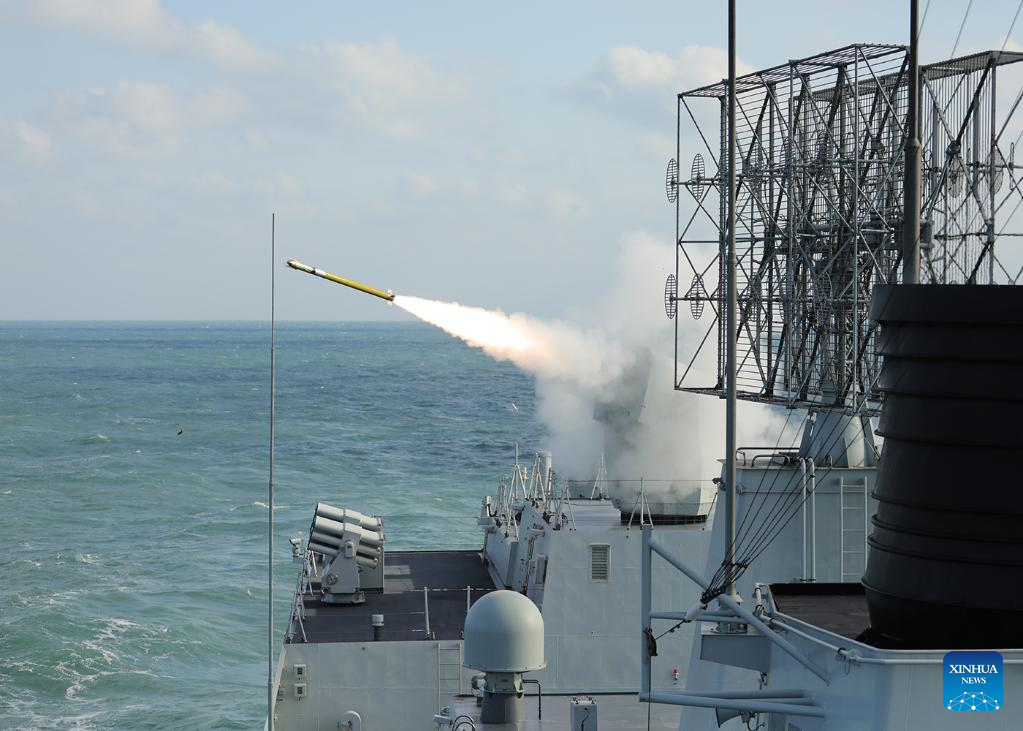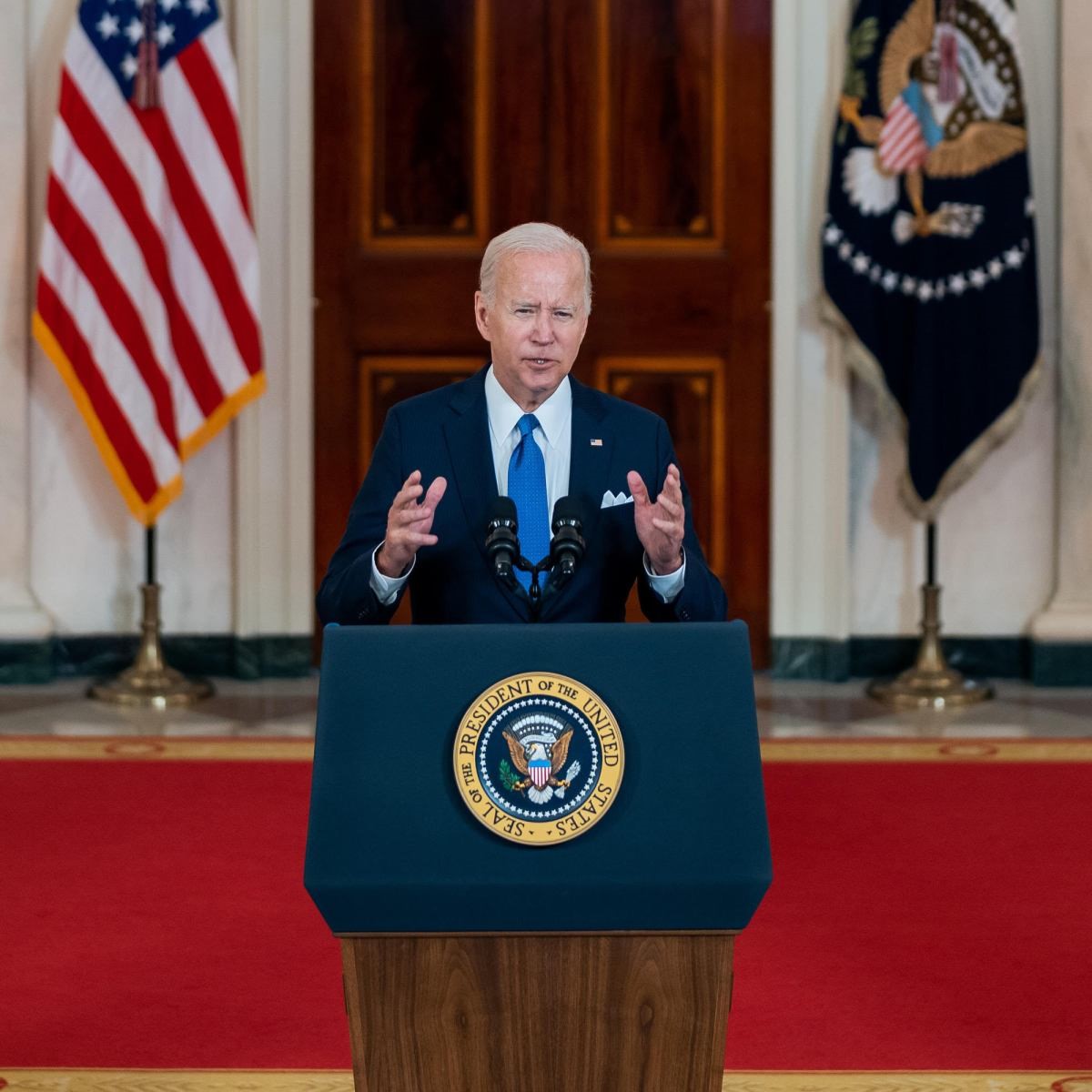Watch our latest television program HERE https://rumble.com/v28x1fk-american-political-zone-february-07-2023.html
Our Latest TV Program


Watch our latest television program HERE https://rumble.com/v28x1fk-american-political-zone-february-07-2023.html

Events in Ukraine draw the world’s attention to western Russia, but there is also another active area of interest to analysts studying the Sino-Russian relationship.
Eastern Siberia is what some in February are calling a “raw materials pantry” for China. Almost 14 months ago, Vladimir Putin opened the Kovykta gas field in a ceremony commissioning the site. Its reserves, estimated at 1.8 trillion cubic meters of natural gas, are almost exclusively sent through the Power of Siberia pipeline to China. It is expected to carry 27 billion cubic meters of gas annually to China while Russian citizens in the region are forced to use firewood and coal to heat their homes through the freezing Siberian winters. Only one percent of Russian homes in the Irkutsk region use gas, although last month the Nezavisimaya Gazeta reported that Moscow is promising to raise that amount to 3.22% at some future date. “In truth, for Moscow, maintaining strong relations with Beijing seems to be much more important than the well-being of its own citizens,” says Vadim Shtepa, writing in the Eurasia Daily Monitor this week.
Despite Russia’s full-scale war in Ukraine, EU member countries at first continued purchasing massive amounts of Russian raw materials which helped finance Putin’s war machine, notes Shtepa. Recent reports indicate that for 2022 Russia may have grossed almost $285 billion in energy sales. Much of that came from Europe in the early days of the war. As European states began rejecting Russian energy exports, Moscow turned to the east and its energy importing partner – China. By last summer Russia was exporting 7.6% more over 2021 numbers. That equates to 1.68 million barrels a day and makes Russia China’s top supplier of oil.
Russia is replacing its European customers with its communist neighbor but at a deep discount. As many analysts in Washington point out, China is the dominant partner controlling the relationship. Beijing receives about a 30% discount on world market prices of oil and gas. This helps resolve a second political problem for Moscow, according to Shtepa. “By expanding raw material exports to China…[it is able] to ensure China’s neutral position regarding Russia’s military campaign against Ukraine, since Moscow has been unable to trigger formal support from Beijing.” Xi Jinping and the CCP leadership are keenly aware of the potential impact of sanctions on China should it become too closely tied to support of the Russia war effort in Ukraine. Although Russia is unlikely to earn an endorsement of the war or convince Beijing to sell it more advanced weapons, the energy sales do compensate for about 20% of revenues lost from European sanctions, according to Alexei Gromov, director of the Moscow Institute of Energy and Finance.
Although some in eastern Russia fear a Chinese attempt to seize Siberian and the Far Eastern territories by force, Shtepa says that “Beijing does not need to do this, as Moscow itself provides the necessary access and resources for virtually nothing.” Chinese companies already control thousands of acres of forests with long-term leases. He argues that Russia’s Far East has de facto been turned into a joint Russian-Chinese raw material colony. Moscow, for the most part, ignores local infrastructure needs in Siberia and its Far Eastern territories. The Russian state Duma has effectively abolished local self-governments and incorporated them in Putin’s “vertical of power” in Moscow, according to the Russian government. Putin’s treatment of the region has not gone unnoticed by the local indigenous populations. There are signs of discontent and frustration over their treatment by Moscow. Some see the government as viewing them as less important than the natural resources of the region. While others accuse Putin of pushing potentially danger energy projects on them without concern for those living in the region. Over the last year this has led to an increasing willingness to protect with some in Siberia calling themselves separatists.
It could result in the fruition of Putin’s worse fear: a two front war which would be hard for Moscow to win while still fighting in Ukraine. It may be the opening China has been quietly waiting for, to recover the one million square miles of Siberia and the Far East it lost after World War II.
Daria Novak served in the U.S. State Dept.
Photo: Pixabay

The ongoing pacificism of the Biden Administration in the face of Chinese aggression against the United States has become a massive danger to the safety of the nation. It’s bizarre nonchalance as Beijing’s spy balloon hovers around U.S. nuclear weapons sites is only the latest example.
The current White House has allowed the southern border to remain open as illegal shipments of Chinese-made fentanyl, in quantities sufficient to poison the whole country, are smuggled in. It abolished anti-espionage efforts aimed at addressing Beijing’s intensive spying. It has tolerated, for a time, the attempted purchase of U.S. land near sensitive military installations. It has looked the other way at Beijing’s financing of violent groups, and its massive propaganda efforts in American universities. As Americans struggled to afford gas, Biden allowed part of the Strategic Petroleum Reserve to be sold to China.
FBI Director Christopher Wray has stated that China is “waging this fight not through legitimate innovation, not through fair and lawful competition… [it is] engaged in a whole-of-state effort to become the world’s only superpower by any means necessary.” It is doing so not only by developing a massive military but by buying U.S. politicians, spying, hacking, intellectual property theft, bribery, blackmail and other nefarious means.
China has developed extraordinary influence in key parts of the American body politic, including the California Democratic Party. Senator Dianne Feinstein’s chauffeur, who according to CBS News, ”also served as a gofer in her Bay Area office and was a liaison to the Asian-American community (who) even attended Chinese consulate functions for the senator. ” He was a Chinese spy, reporting to the Chinese government about local California politics for 20 years.
Another Chinese communist spy who compromised Congressman Eric Swalwell, Fang Fang, also “socialized, networked with Rep. Judy Chu and then-Rep. Mike Honda, campaigned for now-Rep. Rho Khanna, volunteered for Bill Harrison, the mayor of Fremont, California at the time, and fundraised for other, and in some cases, developed romantic or sexual relationships with politicians to gain intelligence and send it back to her handlers, who were believed to be stationed in mainland China.”
It is not a coincidence that California Democrats, especially Rep. Adam Schiff and then-Speaker Nancy Pelosi were at the forefront of the false assaults on Donald Trump. Whatever one might think of the former president, he was undeniably the most anti-China president the U.S. ever produced, explaining the fury that Beijing’s U.S. political allies had for him.
The ultimate prize for Beijing is the presidency itself. And that brings us to a question that is muddied by partisanship, both from elected officials and a biased media: why has Biden been so reluctant to confront China’s illicit and aggressive actions.
In some areas, Biden has taken some appropriate steps. His Administration has engaged American allies in the Indo-Pacific region to work closer together to discourage potential military action initiated by Beijing. But in the 21st Century, aggression may not begin with a dramatic, Pearl Harbor type assault. The more likely path will be through less kinetic means, a fulfillment of Karl Marx’s prediction that “capitalists will sell us the rope with which we will hang them.”
Author and researcher Peter Schweizer reports the following. Chinese researcher Di Dongsheng, speaking in Shanghai shortly after Biden’s election, stated that “China now had ‘old friends… inside America’s circle of power…he reassured the audience that Beijing could settle issues with ‘people at the top’ in the United States. When he asked that question—rhetorically—about Biden’s son’s deals, [he said] there are indeed buy and sell transactions involved here.” His candid comments prompted the Chinese government to remove the speech from its social media platforms.
The Biden family’s financial ties to China, in which significant sums of money were gained without the provision of any actual service, appear to be a textbook case of pay for play influence peddling. America needs to put aside partisan considerations and take a clear-eyed look at this.

There are a multitude of worrisome indicators from across the planet that present a picture of aggressive nations enhancing their military power and working more cooperatively together to threaten global stability and peace. Russia and China are both upgrading their armed forces and training together to present a massive threat to countries across the globe. There can be little doubt that the United States is particularly in their crosshairs.
Even as Moscow’s armed forces remain bogged down in Ukraine, Putin is diligently increasing his ability to threaten the west. He has sent a naval vessel, “Admiral of the Fleet of the Soviet Union Gorshkov,” armed with hypersonic missiles into the Atlantic. It will also deploy into both the Mediterranean and Indian oceans.
The language Russian officials have used is deeply concerning. According to an American Military News report, “During an appearance on Russian TV, parliament member Alexei Zhuravlev said … ‘I will tell you absolutely competently that to destroy the entire the East Coast of the United two Sarmat missiles are needed…The same goes for the West Coast…Four missiles, and there will be nothing left.”
The same journal notes that even as this surface vessel gathers headlines, the Kremlin launched a new nuclear submarine, named the Emperor Alexander III, to sea. It is capable of carrying 16 intercontinental nuclear missiles. It is part of an overall drive to significantly increase Russia’s submarine forces.
China’s dramatic arms buildup, at a rate of increase outpacing even that of the U.S. and the U.S.S.R at the height of the Cold War, cannot be considered just a regional threat. The types of weapons that have been developed and deployed are a clear global threat. A Heritage analysis described a 2021 test of a stunning new planetary strike nuclear missile system, a fractional orbital bombardment system, armed with a hypersonic glide vehicle. “The new Chinese strategic weapon system was reportedly boosted into low-Earth orbit by a civilian space launch vehicle. The launch vehicle, carrying the hypersonic glide vehicle, then made a partial circumnavigation of the globe. At a specified point, the hypersonic glide vehicle, which serves as the weapon’s warhead, was released from the ‘mothership’ before deorbiting and entering the Earth’s atmosphere en route to its terrestrial target.”
Beijing’s intentions to target the United States are becoming increasingly apparent. Radio Free Asia reports that The Liaoning aircraft carrier conducted 320 take-offs and landings in the last 2 weeks of December, in the vicinity of America’s strategic Pacific base Guam.
The danger from the massive military might of the two giant nations is exponentially increased by their growing cooperation in exercises aimed at the United States and its allies. There is a history of combined armed forces training activities, particularly at sea.
According to China’s Defense Ministry spokesperson Senior Colonel Tan “The recent China-Russia Joint Sea-2022 naval exercise fully reflected the level of strategic mutual trust and the depth of tactical coordination between the two sides, and further deepened the China-Russia comprehensive strategic cooperative partnership of coordination for a new era.”
The joint Russian-Chinese threats are not alone. North Korea, wholly dependent on China for its economic survival, has escalated its nuclear threat as well. It’s nuclear program is well passed its early stages and currently constitutes a significant risk to America, Japan, and South Korea. Recognition of that reality has compelled Tokyo to substantially ramp up its defense spending, and has prompted South Korea to demand a greater voice in the nuclear umbrella provided by the United States.
Since the conclusion of the Second World War, the U.S. has benefited from strong defensive alliance headlined by NATO, along with cooperation with several Indo-Pacific nations. The growing axis of Russia, China, North Korea and Iran is a different entity, one that is more offensive in character.
Photo: Chinese naval destroyer Baotou takes part in a joint naval exercise, Joint Sea 2022, in the East China Sea on Dec. 26, 2022. (Photo by Jiang Xia/Xinhua)

Has Joe Biden forgotten that he was elected as president of the United States, not Secretary General of the United Nations?
The question, asked often since his inauguration, has attained new importance since the bizarre revelation that the 46th President has sent scarce energy supplies to China and elsewhere from the U.S. oil reserve, even as American citizens pay unprecedented prices to fuel their cars and heat or cool their homes. The issue has gained even more attention due to the unsettling fact that the Chinese company that received the oil was one in which Hunter Biden had at some point a vested interest in.
Biden’s entire energy policy has benefited China while causing high inflation at home. Despite the reality that only 20% of U.S. energy needs can come from solar and wind, he has slashed U.S. fossil fuel production in favor of those renewables, the equipment for which is largely produced in China.
The preference for questionable international concerns over the good of the American people was inadvertently revealed recently. In a Bloomberg interview, Biden’s National Economic Council Director Brian Deese spoke not about the needs of the American people, but referred instead to preserving a “Liberal World Order.”
During his less than two years in office, Mr. Biden has done far more than merely ignore the needs of the American people. He has consistently put the citizenry in a position where they must sacrifice for the desires and needs of people throughout the globe, often without any real gains for them or their domestic counterparts.
Indeed, the current occupant of the Oval Office has not been reticent in his opposition to the “America First” policies of his predecessor. Isn’t it the job of the President, who, after all, is the employee hired by the nation’s people, to but their needs first?
During the 2020 campaign, Biden harshly criticized Donald Trump’s trade policies, which sparked a rebirth of domestic industrial employment, in addition to protecting U.S. industry from Chinese practices which sought to undercut and eliminate Beijing’s American competitors. Biden has essentially abandoned that initiative. Ironically, the most significant opposition to that move comes not from Republicans, but from his own supporters in the labor movement. The former president was also making significant headway with the United Kingdom in a trade deal that would have enriched both nations, an effort now ignored by the Biden Administration.
Biden disparaged Trump’s attempt to get European members of NATO to pay their fair share of defending the continent from Russia, a policy which, ironically, Vladimir Putin may have achieved by reminding all of the danger he presents through his invasion of Ukraine. For far too long, U.S. taxpayers largely funded the defense of Germany, a nation with more than sufficient financial resources to pay its own fair share.
There is no more obvious issue where Biden puts the interests of others ahead of the American people than in his immigration policy. While staunchly denying reality, Biden clearly has established an open border. He has even unfairly criticized U.S. Border Patrol agents for merely doing their job. The issue has become so desperate that officials from the Texas counties of Kinney, Goliad, Terrell, Jeff Davis, Edwards, Presidio, and the city of Uvalde have declared an “invasion” due to the massive numbers of immigrants streaming across the border, and the extraordinary levels of crime, drugs, human trafficking and taxpayer expense they have brought in with them.
It’s not just a question of law breaking. The current U.S. national debt is over $31.4 trillion. The annual cost to provide services to illegal immigrants is estimated to approach $120 billion annually, an expense the taxpayers cannot afford.
The Biden Administration is violating its moral and Constitutional duty to put the interests of the American people first.
Photo: White House

The war in Ukraine is reverberating around the world. On the Korean peninsula it is increasing ROK awareness of the value of its alliance with the US as a buffer against hostility by foreign forces. It is also intensifying concerns about the South’s vulnerability as a nuclear-weapons-free power facing nuclear-armed state just to its north. A Center for Strategic and International Studies (CSIS) study argues that “For North Korea, the war in Ukraine seems to have amplified the importance of nuclear weapons for its security while prompting Pyongyang to consider a new “first use” nuclear doctrine as well as the operational deployment of tactical nuclear weapons—imitating Putin’s tactics in Ukraine.” The collective shifts in the North’s posture since the beginning of the war in Ukraine, has produced a favorable external environment for North Korea’s continued development of its nuclear and missile programs. “Its increasing weapons capabilities, its threats to use nuclear weapons for offensive purposes, and the vulnerability of US national missile defense interceptors to North Korean multiple independent reentry vehicle technologies have led the South Koreans to question the credibility of US extended deterrence,” it argues. The CSIS report conclude it is time for Washington to reassess traditional approaches to the North Korean nuclear issue.
The United States military is not retreating. In February, the US and South Korea plan to expand joint field exercises and bolster joint capabilities to deter and respond to North Korean nuclear and missile threats, the defense chiefs of both countries said on Tuesday, according to USNI News. The Korean peninsula is sometimes referred to as the land of lousy options. It has been long considered a global flashpoint where nuclear war could break out. Lately it is in the news more as tensions in the region are increasing due to continuing provocations by North Korea and its violations of United Nations Security Council resolutions.
South Korean Minister of National Defense Lee Jong-Sup and US Secretary of Defense Lloyd Austin condemned the north for recent drone incursions and missile launches in a joint statement issued at the defense ministerial meeting on January 31, 2023, in Seoul. They confirmed the ROK-US Alliance is strong and standing together with the international community. The leaders pointed out that the US, ROK, Japan, and NATO are prepared to “bolster the alliance capabilities to deter and respond to North Korean nuclear and missile threats, as well as to expand information sharing and joint planning,” says Dzirhan Mahadzir of USNI News.
The Deterrence Strategy Committee Table-top Exercise (DSC TTX) to be held in February is expected to assess and develop response options to deal with the North Korean nuclear threat. Going forward the types of defense activities envisioned include deployments of F-22s, F-35s and additional visits by the Ronald Reagan Carrier Strike Group. Last October the Strike Group arrived in Busan, South Korea, with a dual focus of increasing the readiness of US and ROK forces and maintaining stability on the Korean peninsula. The current US extended deterrence commitment is Washington’s pledge to devote the full range of its military capabilities, including nuclear weapons, to deter and, if necessary, defeat an external attack on South Korea. “It involves two central purposes: to deter North Korean aggression in all of its forms, and to prevent nuclear proliferation by providing South Korea with an alternative to developing its own nuclear weapons to meet its security needs,” according to CSIS.
The CSIS report suggests that an additional element needs to be considered in 2023: coordinated positions on the peninsula with those of China. It argues it would be productive for the allies to establish a bilateral consultative mechanism to share assessments of the implications of China’s military capabilities for the Korean peninsula and coordinate potential responses. Although Beijing is intricately involved in maintaining stability in the region, it is highly unlikely to work jointly with Washington on such an effort. China is continuing aggressive behavior overseas and has increased its pressure tactics against Washington to derail alliance deterrence initiatives while also attempting to unilaterally influence the behavior of Kim Jong-un, the Supreme leader of North Korea. The peninsula, as one military analyst points out, is a “powder keg waiting to blow.” It may take the war in Ukraine to encourage China to join with other states to secure the region.
Daria Novak served in the U.S. State Dept.
Illustration: Pixabay

The Chinese high-altitude surveillance balloon may be floating well above US continental space designated for commercial aircraft, but this week military analysts around Washington are asking “How low can China go?” This is not the first incidence of a Chinese intrusion into US air space or into that of another country. In recent years the communist giant has violated the land, air, and legally recognized, territorial waters surrounding several Asian nations. Since China’s opening to the West over four decades ago, Beijing has been given a pass on its belligerent behavior from other countries and international organizations. The increasing number of intrusions in recent years has several purposes according to military analysts, expert in studying Chinese military tactics and strategy.
The latest incident, which is ongoing this week, involves a Chinese balloon reported to be the size of three school buses. It was spotted first over the Aleutian Islands off Alaska before moving eastward toward the continental US. It then traveled close to sensitive US military installations in Montana. The balloon triggered a security alert that involved briefing the US president and taking military measures to protect American assets from aerial surveillance and other possible hostile actions. A decision was made in Washington to watch but not remove it, although there was a period when it was safe to do so without consequences to people on the ground or US infrastructure. What makes this incident intriguing is not only the potential danger it posed, but China’s capacity to operate just below the level of a national security threat requiring a military response.
China’s PLAAF (People’s Liberation Army Air Force) and PLAN (People’s Liberation Army Navy) approach foreign military forces legally patrolling their home territories on a regular basis. Canada this week is also monitoring a potential Chinese surveillance balloon over its territory. The frequency and intensity of potential engagements is increasing, but the leadership in Beijing is adept at remaining below the threshold that would require a military response. With each incident China gains invaluable intelligence information. Some of it derives from the actual surveillance event; much of it comes from testing a potential future adversary’s response to the intrusion. Like young children who often poke a finger at another repeatedly to provoke a response, Beijing is learning how far it can go before it must retreat to avoid getting smacked back.
“Montana, a sparsely populated state, is home to one of only three nuclear missile silo fields in the country, at Malmstrom Air Force Base… [an] official said the apparent spy craft was flying over sensitive sites to collect information,” according to a BBC report Wednesday.
Previous incidents did not involve the surveillance balloon remaining aloft over the US for such an extended period of time.
It appears China is ratcheting up its testing of American willpower to respond. So far, Washington is letting China poke the United States without much pushback. The question that needs to be addressed now is Why is China willing to repeatedly poke the US at a time when relations are already tense?
China already has an extensive system of surveillance satellites, some of which are military in nature. It has proven its offensive military technology in tests that indicate it can move its satellites from one orbit to another to knock out foreign communications and other geostationary satellites.
The US, according to one analyst, is still working to develop a comparative capability to counter China’s space war technology. As China approaches a rough military par with advanced Western nations in the coming decades, Beijing may be more concerned with gathering information about how foreign nations make command decisions in response to security threats. China’s military is gaining technology but remains devoid of real combat experience. It may be the major reason Xi Jinping had yet to invade Taiwan. The PLAAF and PLAN appear to be testing the waters and gathering information.
Unlike Western leaders, Chinese political culture demands its leaders think in generational terms. As Sun Tzu wrote long ago, “move to higher ground to see farther.” The threat from China needs to be viewed as a long-term one that is not going away. Coddling Beijing allows it the catch up time it needs to poke everyone and gain valuable experience. As long as the West allows it to occur, China will continue to provoke other countries.
Washington needs to recognize what is happening today is similar to a long-term commercial negotiation in which one side continues to demand concessions until the other side says enough. Only in this case it is physical and the threat has the potential to be nuclear.
Daria Novak served in the U.S. State Department, and lived for a time in China.
Illustration: Pixabay

The coalition of Western political leaders remains focused on Russia’s war in Ukraine but, it is not the only strategic location where Putin is active. He is also quietly expanding Russian efforts to combat democratic moves in the Global South. Western media often miss that message and rarely cover Russian activities in Africa. Putin’s agenda is aided by a lack of serious Western media coverage of political events in the sub-Saharan region. Over recent decades major news organizations, including the New York Times, have closed many news bureau locations on the continent, and left some of the remaining bureau chief positions unfilled for long periods. The important Nairobi bureau chief position for the NY Times, which covers many countries, was left open for several years. The lack of coverage creates a strategic political opening for Putin. Morris Kiruga, writing in The Africa Report, calls an advertisement for the NY Times Nairobi position “better suited for an 18th-cenutry explorer than a 21st-century critical journalism role.” The ad for the position is an indication of the type of political coverage coming out of Africa in recent years. It called for a journalist who seeks “a tremendous opportunity to dive into news and enterprise across a wide range of countries, from the deserts of Sudan and the pirate seas of the Horn of Africa, down through the forests of Congo and the shores of Tanzania.” The NY Times’ mile wide, inch-deep coverage of Africa, along with a dearth of news from other media, aids Putin’s outreach in South Africa.
The fake Russian discourse in South Africa, barely covered by journalists, seeks to circumvent Western alliance efforts to strengthen relationships in the Global South. Last week Russian Foreign Minister Sergei Lavrov traveled to South Africa for a working visit to encourage the country’s political leadership to become more neutral due to the West’s escalating pressure on Russia. Pavel Baev, of the Jamestown Foundation, points out that Lavrov’s hosts appeared very receptive to the outreach effort and that some viewed the level of Western unity against Russia “discomforting.” The trip is aimed to lay groundwork for the second Russa-African Summit scheduled for late July 2023 in St. Peterburg. Baev reports that the “the content of these strenuously cultivated ties has changed profoundly since the first such summit in Sochi in October 2019.” South Africa is the fifth member of the BRIC multilateral grouping that also includes Brazil, China, India, and Russia. Baev suggests that Moscow finds the group’s “vitriolic anti-Western discourse rather useful” although trade among BRIC countries remains small and investments insignificant.
During Lavrov’s trip the foreign minister avoided raising the Wagner Group’s activities in Africa, despite Washington’s delayed designation of the group as a “significant transnational criminal organization” on January 26, 2023. “The Kremlin has denounced this characterization as “demonization,” but Wagner’s track record of operations in the Central African Republic, Sudan and Mali is rich with evidence of looting, torture and murder” says Paev. He notes the Russian Foreign Ministry conducts no oversight of Wagner’s networks and “may be clueless as to whether the group is planning an expansion toward Burkina Faso, which has severed traditional military ties with France.”
Russia’s transatlantic outreach is quite limited and its position in the Middle East is weakening, adding credence to recent reports of increased Russian efforts to make Africa its foreign policy priority by default. To date there is little extended Russian-Chinese regional cooperation in Africa. Russia is sending only one ship to the region for a joint naval exercise with China in 2023. Beijing prefers working unilaterally in Africa, despite Russian attempts of regional cooperation with its communist partner. Beijing also shunned Russian offers of Wagner mercenaries for its security and instead is developing its own quasi-private forces in Africa.
“Russian President Vladimir Putin’s ambition for the Russian-African summit, to which Lavrov invited the king of Eswatini, is not only to compete with the US-Africa Leaders Summit held in Washington in December 2022 but also to demonstrate to China the value of Russia’s connections on the continent,” according to Baev. Putin is not in a strong position in Africa but is pushing to compete on the ground with China and the Democratic West. New trouble could be brewing with Russia’s Wagner Group in Africa this summer. Putin may decide to use his mercenaries to score a victory in a more fragile African state. The best, although counterintuitive, outcome is for Kyiv to do well enough that Moscow must concentrate on Ukraine and leave Africa alone this summer.
Daria Novak served in the U.S. State Dept.
Illustration: Pixabay

If your local radio station does not carry the Vernuccio-Novak Report, listen to it here: https://drive.google.com/file/d/1RXh5GIhF1JVY7eIAR929jivG3r5A-jQ0/view?ts=63daddef

Watch our latest TV program, featuring former White House Budget Director David Stockman and Poland’s Consul General to the United States Adrian Kubicki. Tune in at https://rumble.com/v280ftu-the-american-political-zone-janary-31-2023.html